
Sydney pygmy pipehorse (IL2015102401) on 24 October 2015.
Sunday 27 December 2015
I have often wondered why white Sydney pygmy pipehorses, Idiotropiscis lumnitzeri, seem to appear as adults and I don't see them when they are small. Recently I found a drab male that over a few weeks became white. Perhaps that answers my wondering. Even more interesting was a white female that went drab over a few weeks. She had been white for a couple of months and then gradually went drab and became cryptic.
I first saw a male Sydney pygmy pipehorse (IL2015102401) on 24 October 2015 on Diversity Rock near The Steps at Kurnell. He was a drab brown grey colour and difficult to spot.. Over the next few weeks he got lighter and eventually went white.
Here's a sequence of photographs of his left side.

Sydney pygmy pipehorse (IL2015102401) on 24 October 2015.
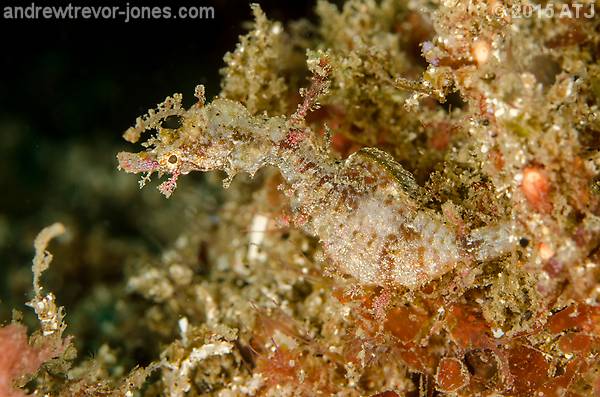
Sydney pygmy pipehorse (IL2015102401) on 30 October 2015.

Sydney pygmy pipehorse (IL2015102401) on 3 November 2015.
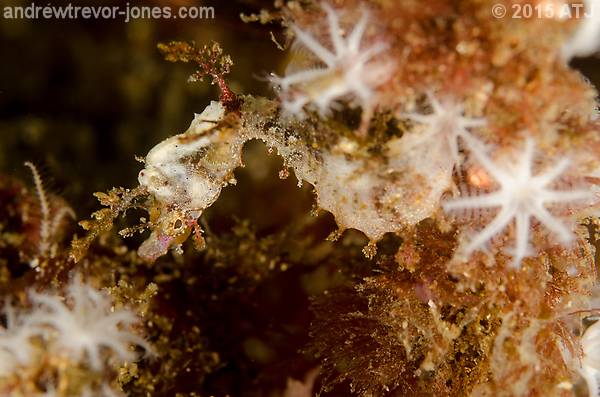
Sydney pygmy pipehorse (IL2015102401) on 11 November 2015.
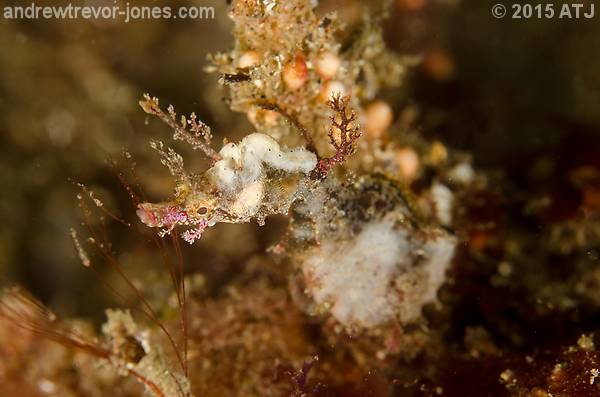
Sydney pygmy pipehorse (IL2015102401) on 14 November 2015.
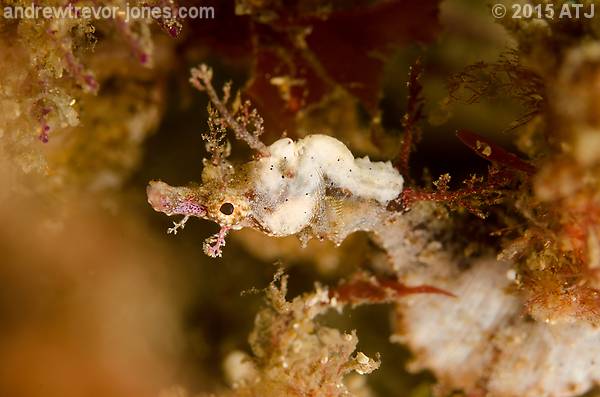
Sydney pygmy pipehorse (IL2015102401) on 17 November 2015.
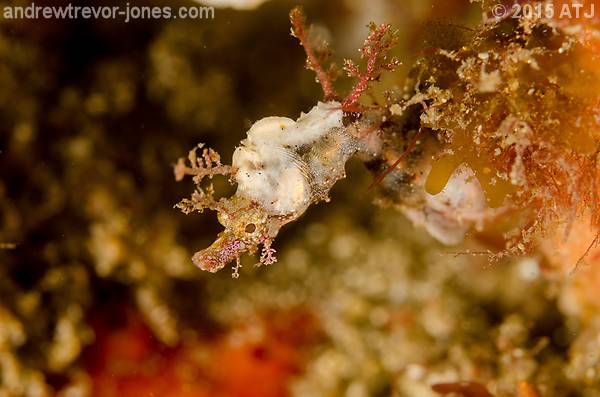
Sydney pygmy pipehorse (IL2015102401) on 22 November 2015.
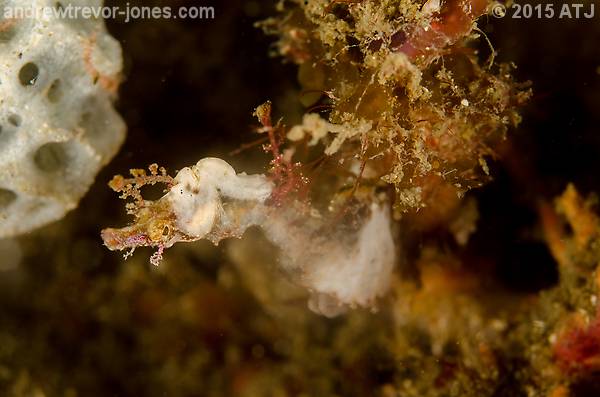
Sydney pygmy pipehorse (IL2015102401) on 28 November 2015.
Here's his right side.
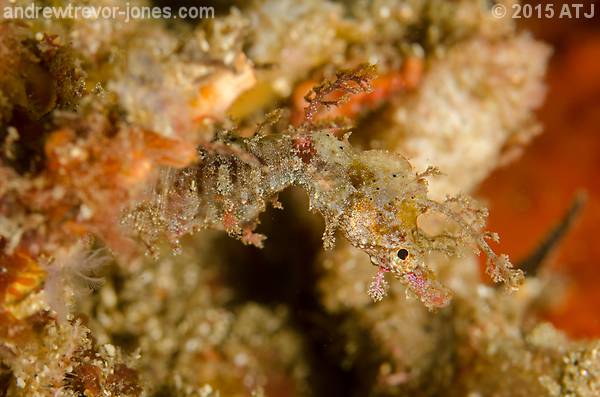
Sydney pygmy pipehorse (IL2015102401) on 31 October 2015.

Sydney pygmy pipehorse (IL2015102401) on 3 November 2015.

Sydney pygmy pipehorse (IL2015102401) on 11 November 2015.

Sydney pygmy pipehorse (IL2015102401) on 17 November 2015.
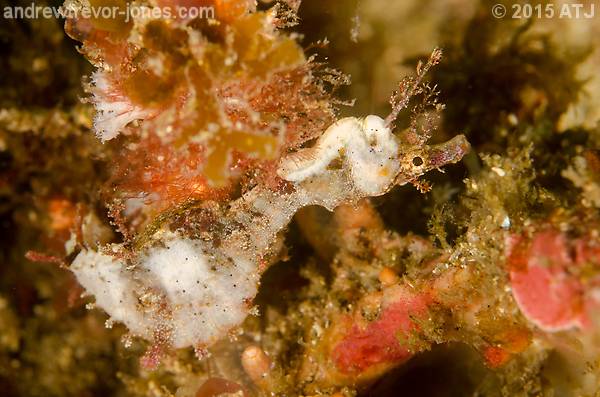
Sydney pygmy pipehorse (IL2015102401) on 20 November 2015.

Sydney pygmy pipehorse (IL2015102401) on 24 November 2015.
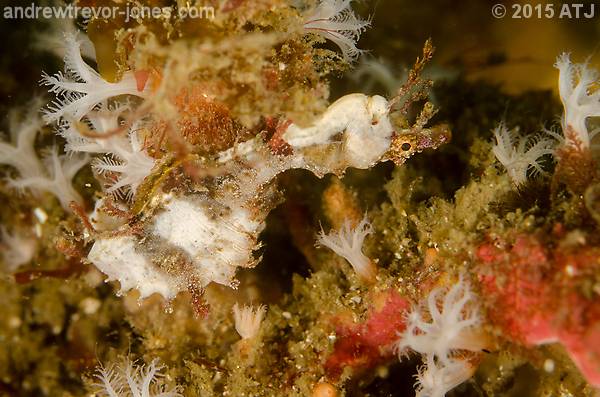
Sydney pygmy pipehorse (IL2015102401) on 1 December 2015.

Sydney pygmy pipehorse (IL2015102401) on 4 December 2015.
Unfortunately, the male pygmy pipehorse is no longer on Diversity Rock. The last time I saw him was 4 December and I can't watch him any longer.
There's a pair of pygmy pipehorses at Bare Island that I have been watching since August. I believe Nick Missenden has been watching them even longer. When I first saw them on 14 August they were both white and quite obvious. Interestingly, I had seen a more cryptic male nearby a week earlier but had not noticed this pair even though they are white and stand out. The female (IL2015081402) stayed white for at least 2 of the months I was watching her but then gradually lost her white colour and is now quite hard to spot - other than her tail which still has white on it.
Here's a sequence of photographs of the female showing her change in colour, first her left side and then her right.
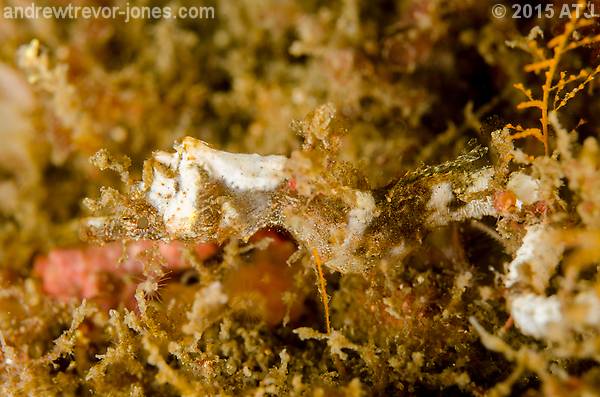
Sydney pygmy pipehorse (IL2015081402) on 22 August 2015.
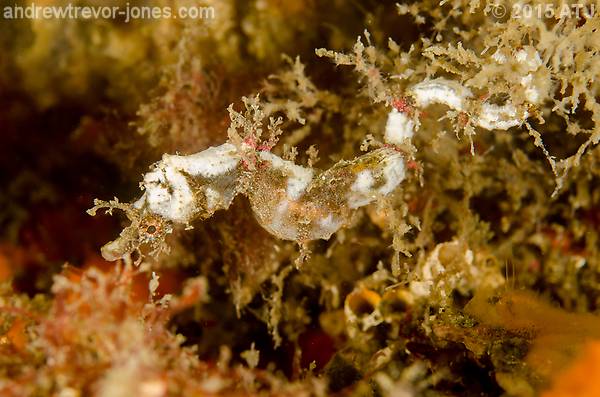
Sydney pygmy pipehorse (IL2015081402) on 8 September 2015.

Sydney pygmy pipehorse (IL2015081402) on 17 October 2015.
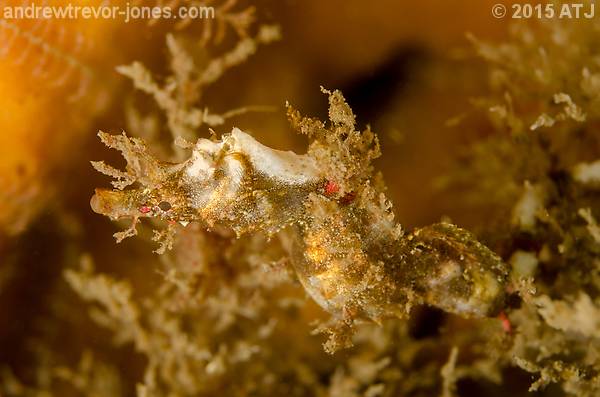
Sydney pygmy pipehorse (IL2015081402) on 2 November 2015.

Sydney pygmy pipehorse (IL2015081402) on 16 November 2015.

Sydney pygmy pipehorse (IL2015081402) on 7 December 2015.
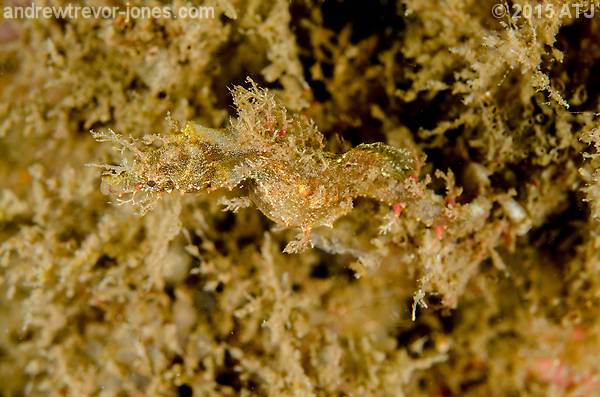
Sydney pygmy pipehorse (IL2015081402) on 14 December 2015.

Sydney pygmy pipehorse (IL2015081402) on 19 December 2015.
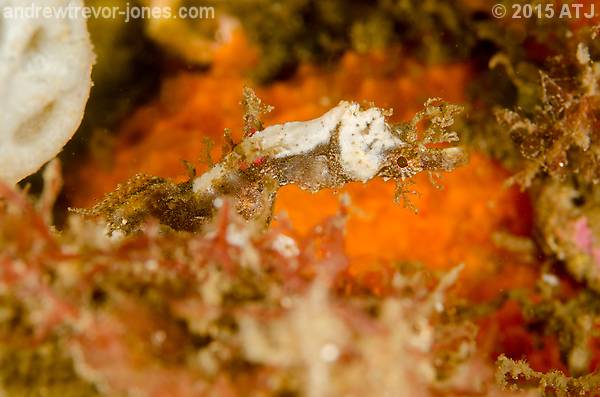
Sydney pygmy pipehorse (IL2015081402) on 14 August 2015.

Sydney pygmy pipehorse (IL2015081402) on 20 September 2015.
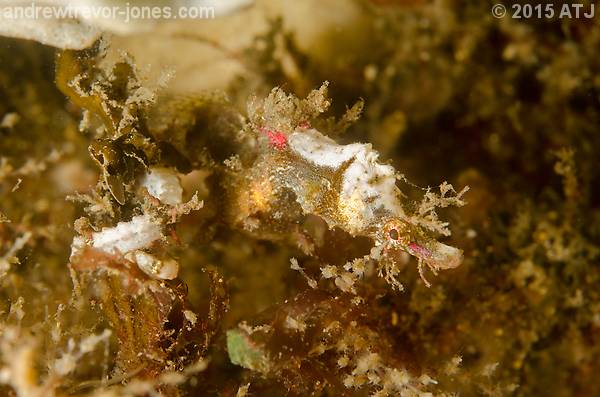
Sydney pygmy pipehorse (IL2015081402) on 14 October 2015.

Sydney pygmy pipehorse (IL2015081402) on 7 December 2015.
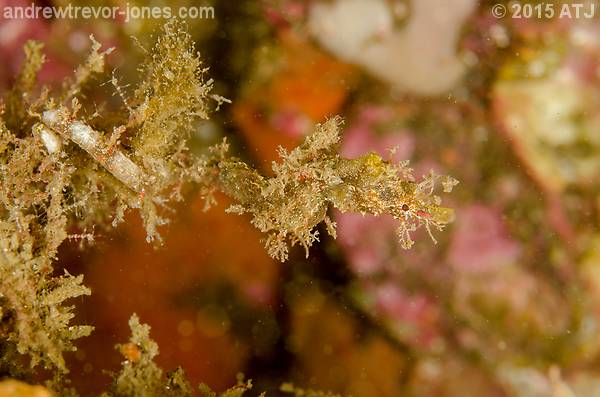
Sydney pygmy pipehorse (IL2015081402) on 18 December 2015.
This is a good question and I don't know the answer. White individuals stand out a lot more and must be easier for predators to spot. They are certainly easier for divers to see. It seems counter intuitive for them to be white at all and even more so that they can change from cryptic to white.
I frequently see cryptic individuals with partners (and often both the male and female are cryptic). I often see cryptic males that are pregnant. This suggests they don't need to be white to find a mate, to breed or even to survive. So why do they become white?
I can understand going back to being cryptic from being white but I don't see the advantage of being white. I guess the reason may never be known.
Locations is the first factor. The same individuals stay in the same location over time so if I see a pygmy pipehorse where I have seen one before there's a good chance it is the same individual.
Location alone does not guarantee it is the same individual. In fact, a week before I first saw IL2015102401 at Diversity Rock there was a different male (IL2015101801) there. His colouration was quite different. And a week before that there was a different male (IL2015091101) again. I know this by looking closely at the colour and markings on the face and body.
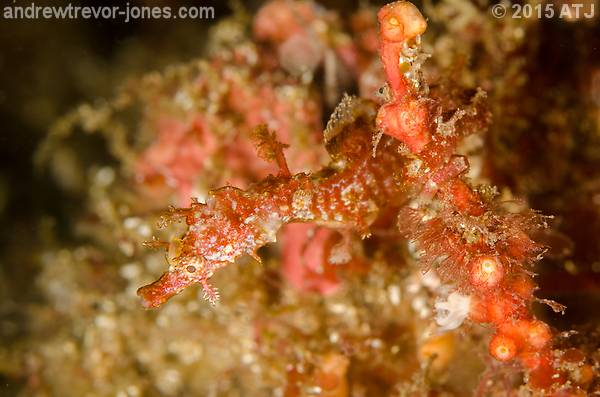
This male Sydney pygmy pipehorse (IL2015101801) was on Diversity Rock the week before I first saw IL2015102401.

This male Sydney pygmy pipehorse (IL2015091101) had been on Diversity Rock for a number of weeks before both IL2015101801 and IL2015102401.
I therefore need to look closely at the markings on and around the head to make sure that each sighting is a match.
If I compare the markings on the head of IL2015102401 at various times over the period of sightings I can confirm it is the same individual.
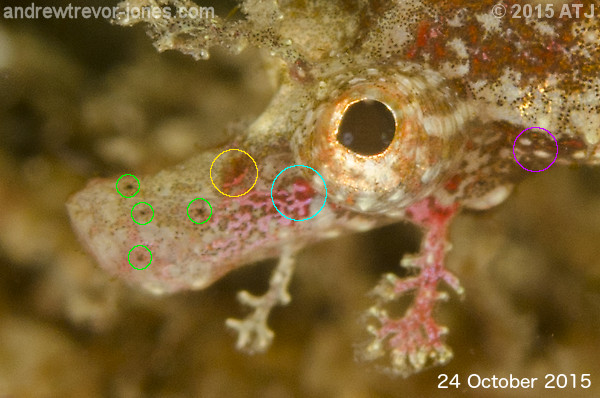

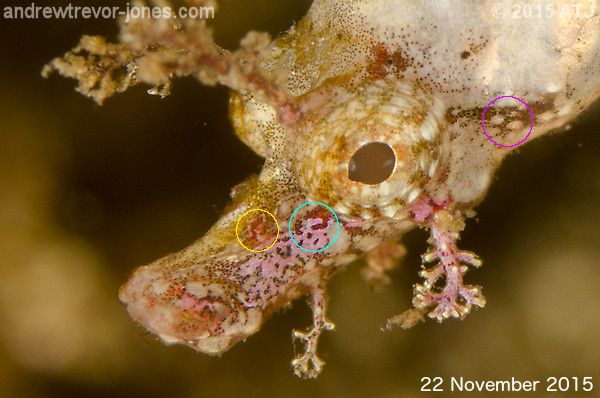
I was able to do the same thing for IL2015081402.
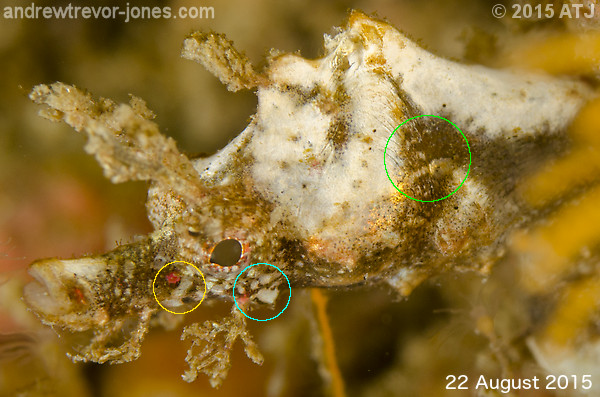
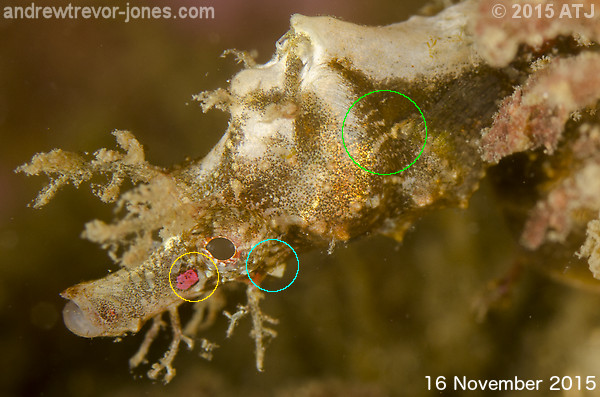
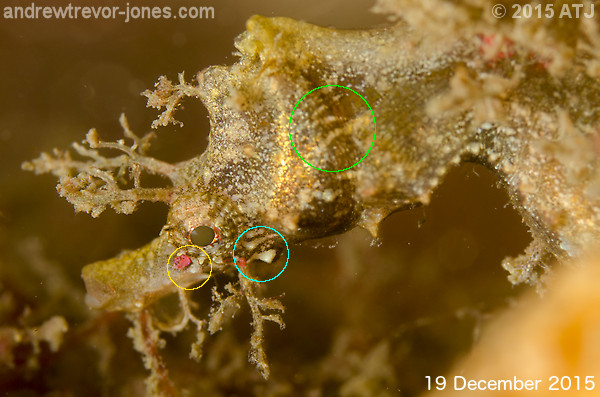
For both individuals I am confident that they have been the same individual on each and every sighting.
I have found the exercise very interesting. While I don't understand why they change their colours it is good to know that they can and they do.
Please leave Feedback if you have any comments or questions about this blog entry.